A number of the apples sampled at our 77 variety apple tasting in 2018 would be unfamiliar even to knowledgeable apple growers. These are local discoveries and novel varieties from nearby breeding projects, many of which exist only as a single tree each. All of these apples have distinguished themselves in one way or another over their years of existence, enough so to earn a place at our tasting tables, where several of them have performed quite well among the stiff competition. Freddy Menge, grower of a preponderance of the apples at our tasting, has offered some comments on these novel apples which I thought were worthy of pulling aside and illustrating on their own. —Andy Moskowitz
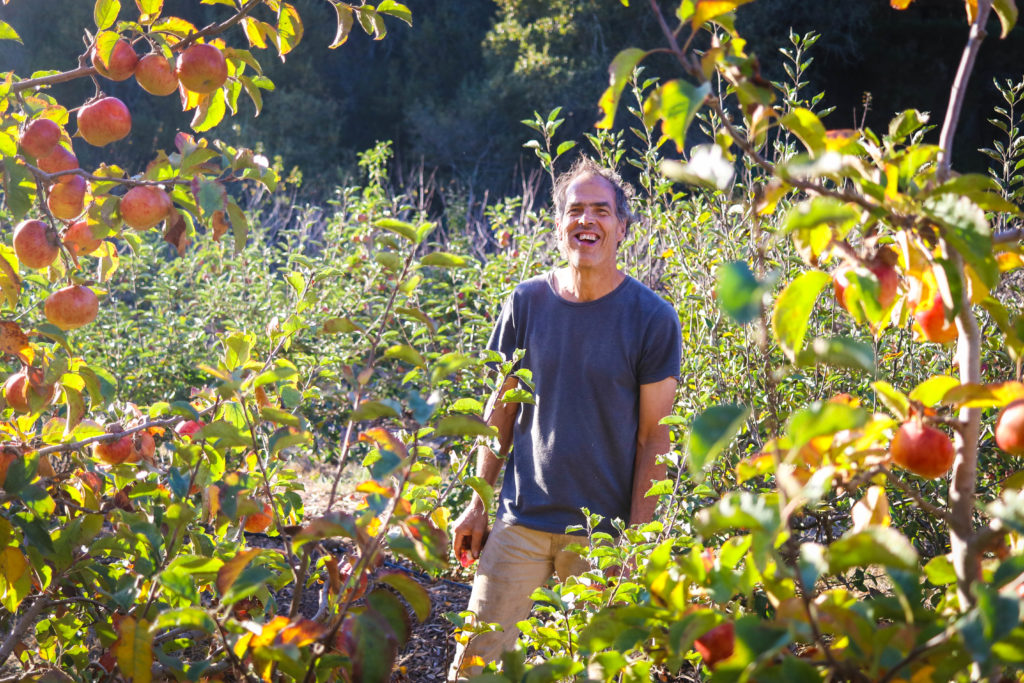
Some of the apples in the tasting will be unfamiliar to most people. There are some very obscure heirloom types, also some seedling rootstocks rescued from abandoned orchards because of their exceptional flavor. Some of the apples are the product of one or another local breeding project. In these comments, I will go down the list and provide what information I can on the rescued and experimental types.
First apples in question are the numbered selections from Jim Rider’s breeding program: C-43-10, A-1-45, C-20-176, C-7-211, C-19-148.
[Number in parentheses indicates vote tally at our 2018 tasting.]
These are all, I believe Pink Pearl seedlings, crossed with various commercial cultivars, Braeburn, Cameo, and others. Jim has been growing out these and thousands of other seedlings for a decade and a half; the A-1-45 is from his first lot of 50 or 100 trees, and is amazingly good. It’s similar looking to Pink Pearl, but larger, prettier, longer-keeping, sweeter, less prone to cosmetic defects like stem-end cracking, and a bit later ripening. The other numbered apples are very good as well. They were ripe much earlier in the season, and so were held a month or so in refrigeration. This put them at slightly past peak, but still so good, they made quite a commotion at the tasting. C-20-176 was quite soft, but so good, can’t wait to taste this one when it’s fresh.
‘Pineapple Crunch’ apple
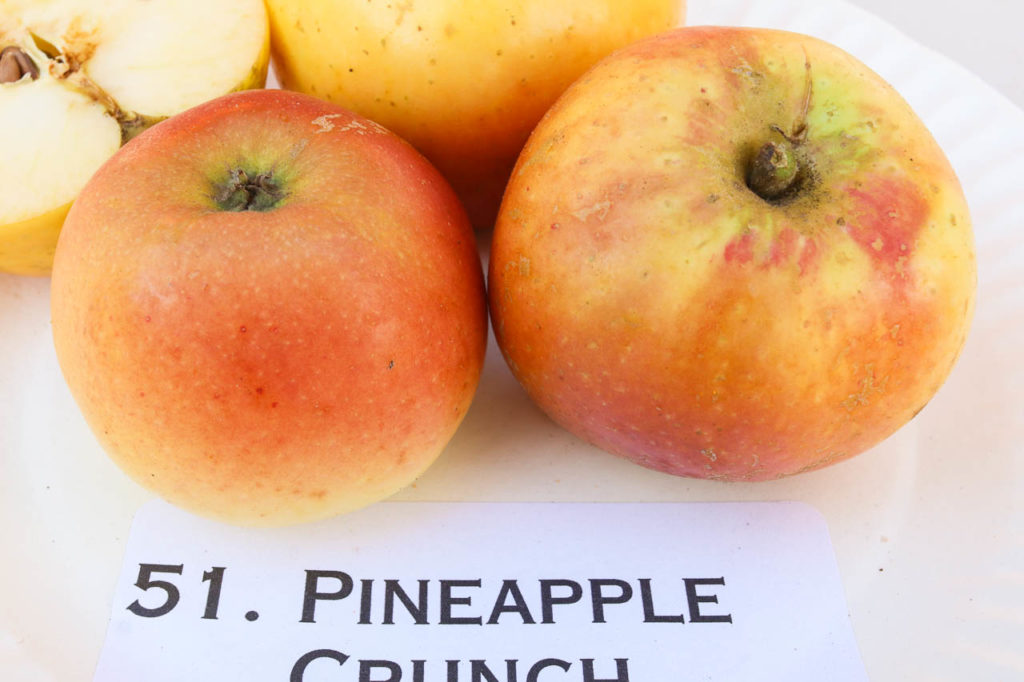
Pineapple Crunch is a Rubaiyat seedling, open-pollinated, very crisp and intense, aromatic sweet-tart flavor. Productive, compact tree. Reject from my amateurish breeding project, not pink-fleshed, but very tasty.
‘Stardust’ apple
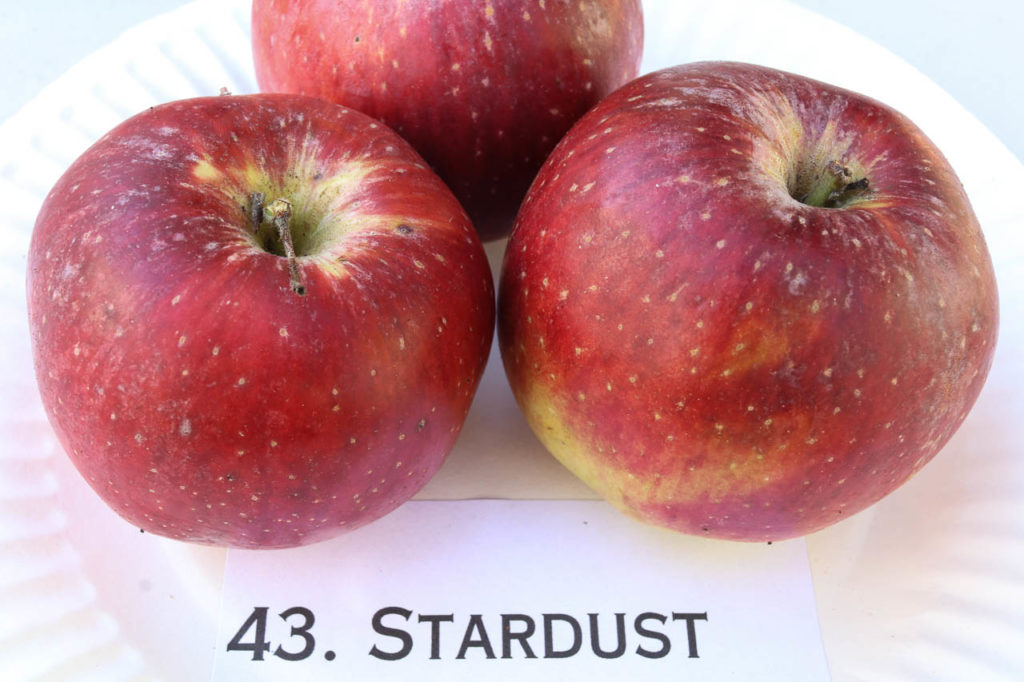
Stardust is a seedling found in an old pippin orchard on Quarry road in Aromas in 2009. A stunted little thing, we found it peeking out from under an invading oak tree. It was covered with tiny crab-apple sized fruit that looked and tasted a bit like Spitzenberg. On a well-tended tree it produces large handsome 5-pointed, conical, slightly ribbed fruit, dark red in color and speckled with prominent gold lenticels, suggestive of Bellflower, one of it’s probable parents. Great, rich, celestial flavor, crisp texture, very good keeper.
‘Rachel’s Mystery’ apple
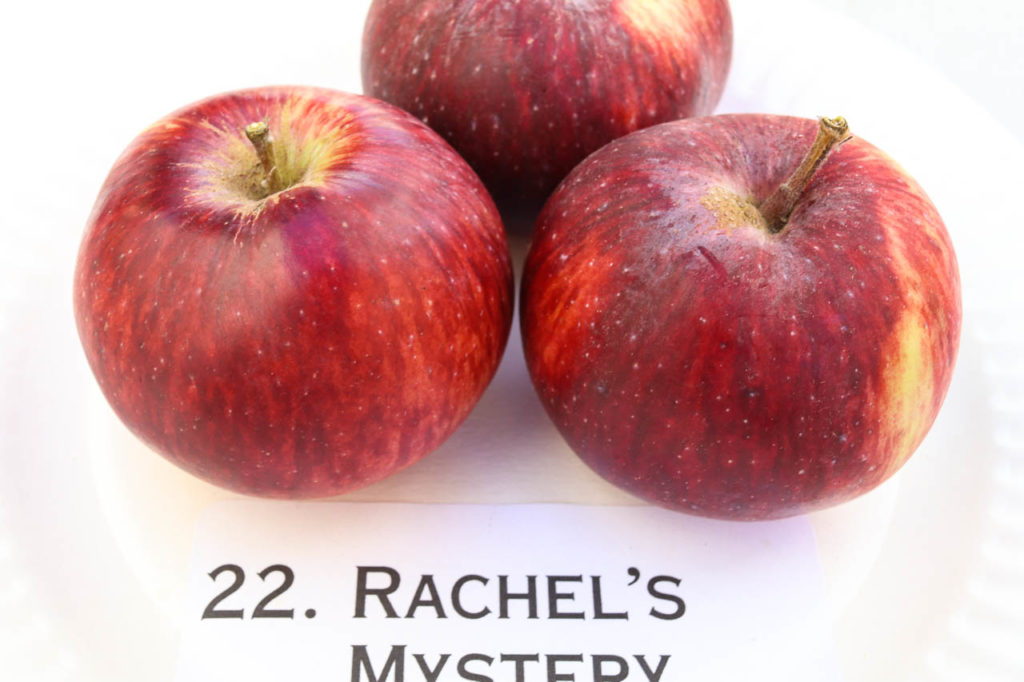
Rachel’s Mystery is an apple we picked up at a scion exchange 25 years ago, but lost the tag. When my daughter was 3, it grew on a low branch that was the only one she could reach, hence the name. It is either Empire, or something very similar.
[Having placed quite well over our last years of tastings, and always ahead of Empire, Rachel’s Mystery may prove that a solid name and story can turn a good cultivar into a remarkable and highly desirable cultivar. —AM]
‘Pineapple Candy’ apple
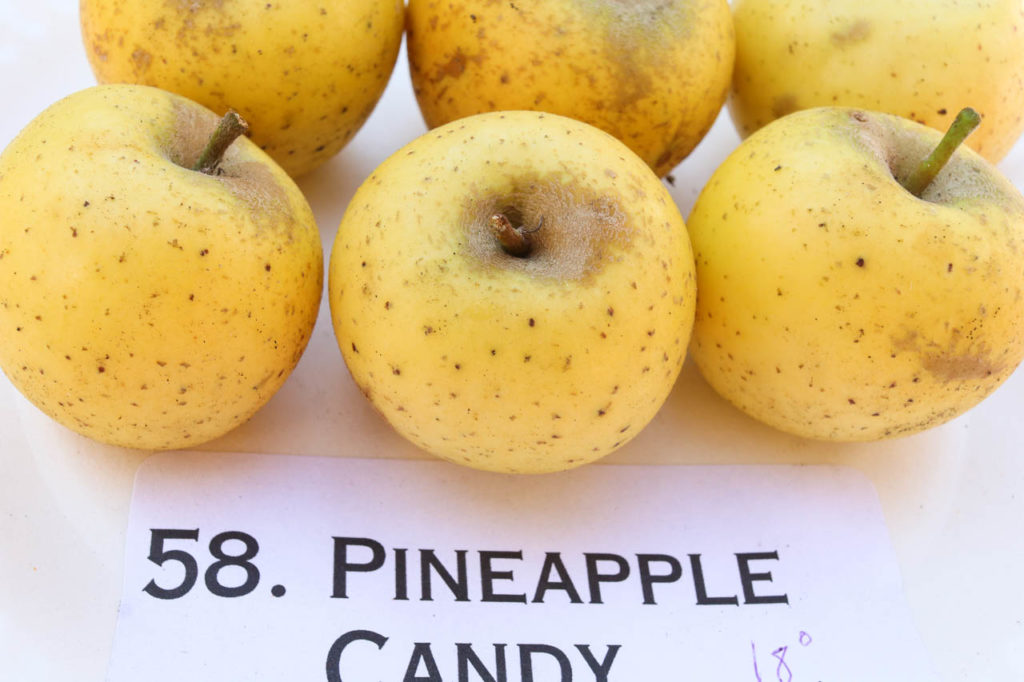
Pineapple Candy is seedling of Wickson Crab, which seems to be a very good parent if conferring good flavor to its offspring qualifies it. No idea what the pollen parent is, but flavor is intense sweet tart, and aromatic.
‘Cornerstone’ apple
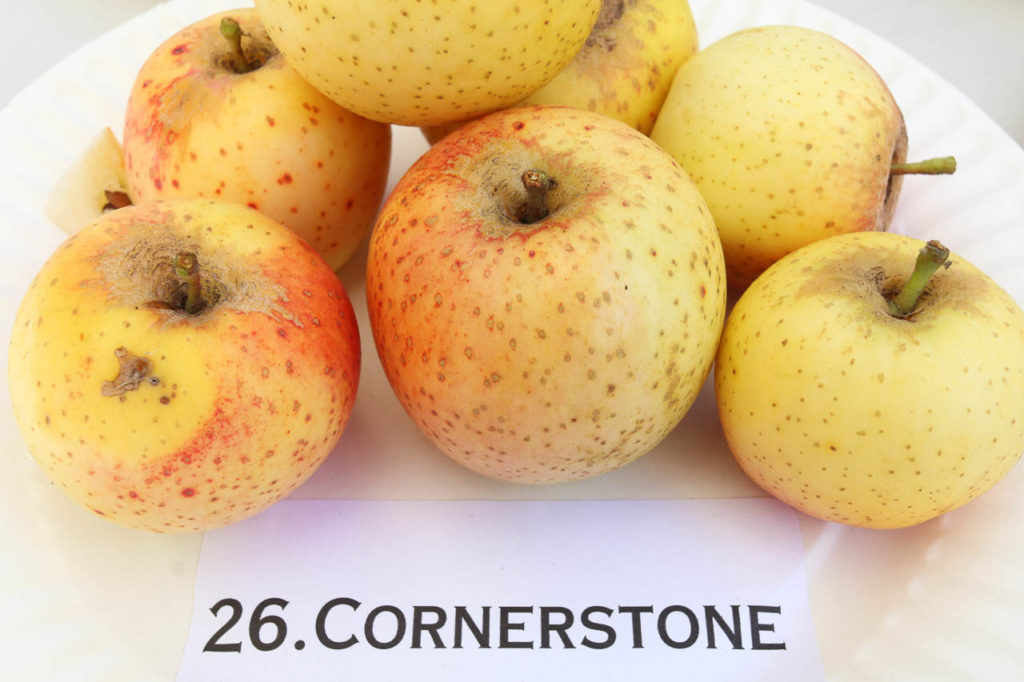
Cornerstone is a seedling of Grenadine, open-pollinated/accidental cross with Yellow Bellflower, which it resembles. Flavor is very good, sweet and high.
‘Pinwheel’ apple
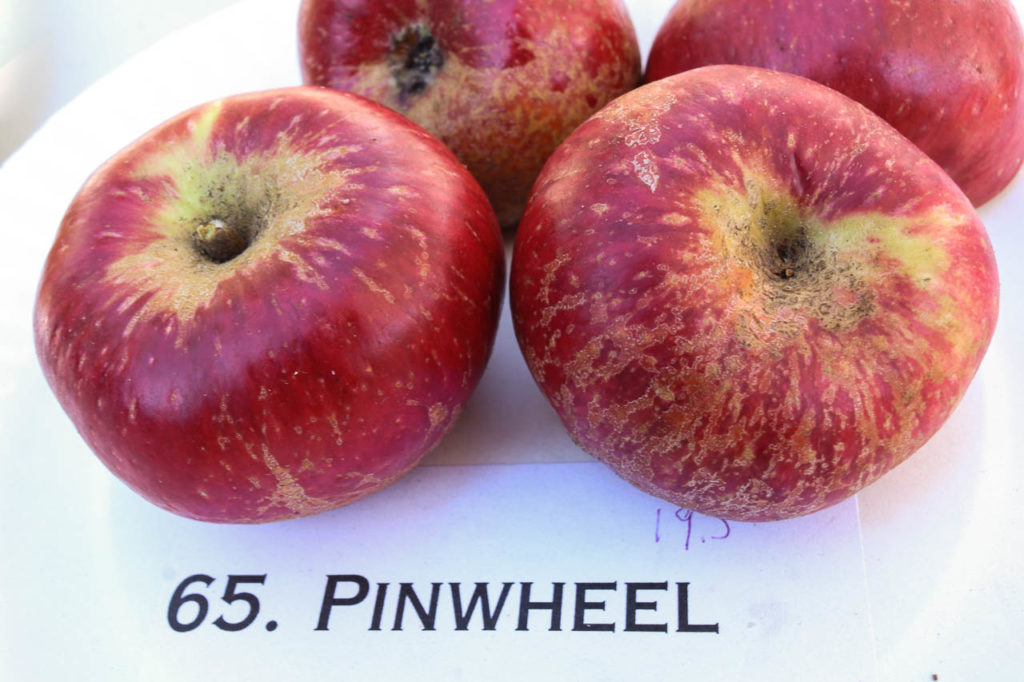
Pinwheel is a seedling of Allen’s Everlasting, crossed perhaps with Wickson Crab. Looks like Allen’s, but brighter and redder and smaller. Late ripening, good keeper.
These just being just some of the interesting and tasty new apple varieties coming out of Jim’s and Freddy’s orchards, I hope we’ll be able to publish photos and descriptions of others in the future. Some of these cultivars remain proprietary or in evaluation, and some have already been preliminary released via CRFG scion exchange circuits. Join the CRFG to be a part of our community of experimental growers and flavor aficionados. —AM
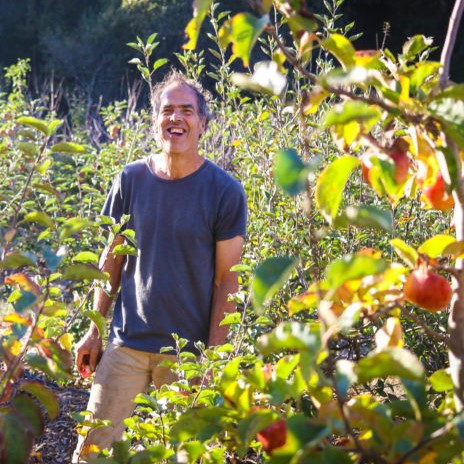
Freddy Menge grows select high-flavor fruit varieties at his orchard in Larkin Valley, Santa Cruz, is one half of the family run Epicenter Avocado Nursery, and has served as Chairman and other roles for MBCRFG.

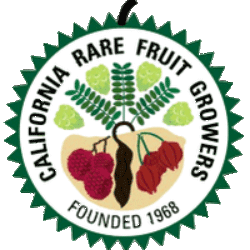
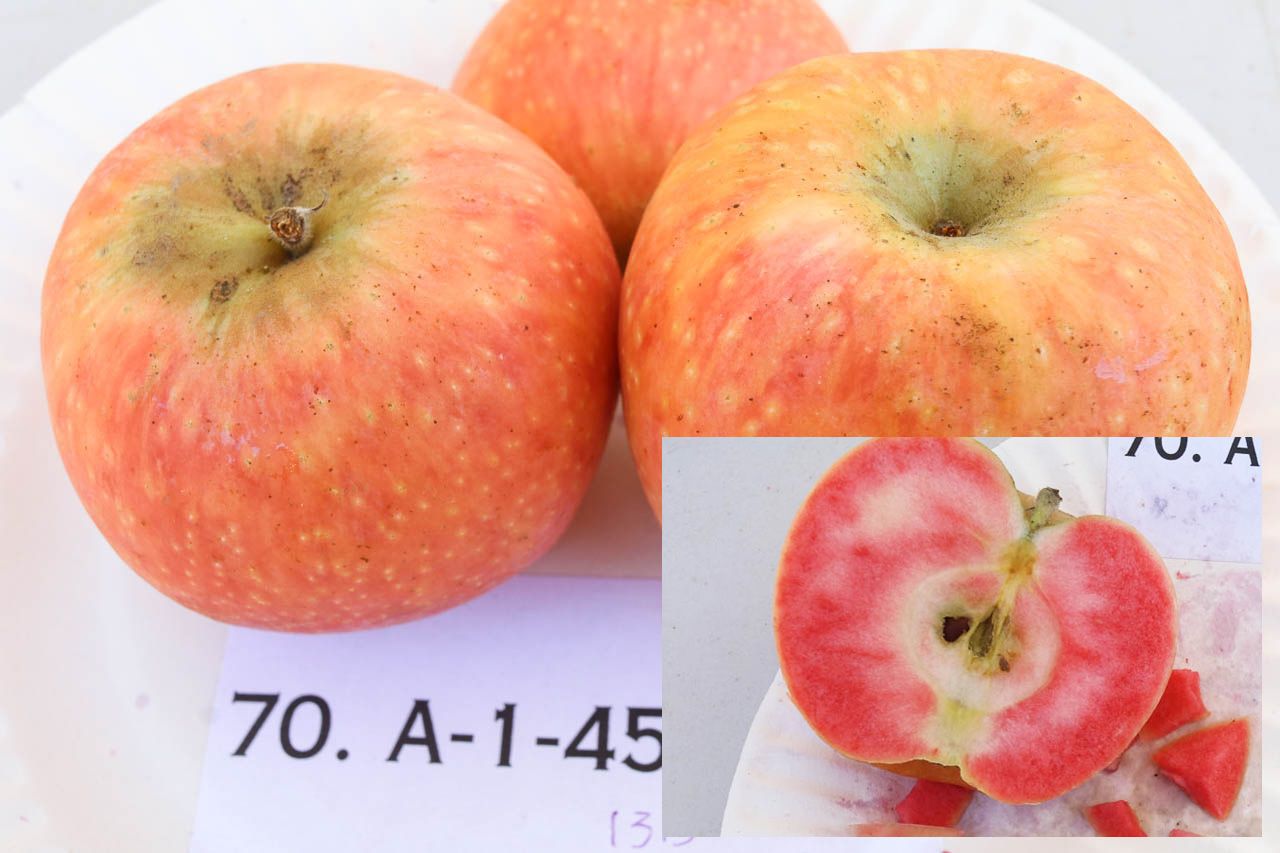
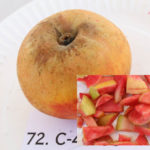

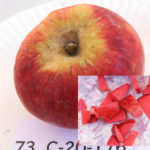
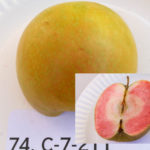
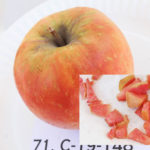
No longer living in Santa Cruz county, but I hope it won’t be too long before these, or at least some of these, wonderful apples will be available to our favorite fruit tree vendors, like Raintree, Trees of Antiquity, and Burnt Ridge Nursery.
I propagated Pineapple Crunch during last year’s grafting class. Now I know its backstory! Thanks for the info.
Does the note on Pineapple Crunch mean it will be abandoned? Too bad if so.
It struck me as an apple that checked all the crunchy sweet boxes the modern market demands, but that also had considerable character.
Hi Adam! Really great to see your write-up on Pineapple Crunch (https://adamapples.blogspot.com/2020/05/pineapple-crunch-apple-taste-review.html). I’ve enjoyed your blog for some years and have meant to bring your attention to our bit of publishing on apples at this website.
I’ll leave it to Freddy to extrapolate on what ‘reject’ means (I think that just refers to it not hitting the redflesh objective), but I can report that the cat’s out of the bag, as I know he’s shared PC at our scion exchanges for at least the last couple years.
And I’ll have you know that your evaluation was spot-on when you called this apple a winner–it was indeed the #2 top pick at our Oct 2019 tasting of 77 apples: http://mbcrfg.org/apple-tasting-2019-rankings/
(You might also enjoy this little video I filmed at our 2018 tasting: http://mbcrfg.org/video-tasting-77-california-apples/)
Regarding commercial potential, I think it might unfortunately remain to be proven that this has the right cultural characteristics to hit the mass market. In response to my own hype on this apple, Freddy notes that it is something of an ephemeral delight (below).
But those who’ve tasted it at peak seem to almost unanimously agree that this is a superb apple, and it should indeed be a really great backyard specimen.
https://www.facebook.com/groups/1719852001584255/permalink/2631918850377561/
Freddy Menge: “You make it sound so great! The color is a waxy yellow and always shows an orangey cheek when it’s getting ready to become too ripe. There is Winter Banana in the parentage of Etter’s red-fleshed crosses that expresses itself in the seedlings of Rubaiyat, Grenadine and Pink Pearl. Winter Banana is a terrible apple that has really delicious flavor for about five minutes before it becomes intolerably mushy, dry and insipid. Pineapple Crunch has spectacular flavor at it’s peak, but the window is a bit narrow. it is rock hard and spicy and as soon as it yellows-up, becomes grainy and sweet and even a bit bland. The specimens for this tasting were right on the edge of perfection, and showed this cultivar at it’s best. The tree is compact, almost spurry, with good branch angles, annually productive, a great tree, It’s just that the fruit shows a bit too much of it’s Winter Banana ancestry to want to plant a lot of them. For the backyard, it is really good.”
Andy, thank you for being so generous with information about Pineapple Crunch!
I am sure your more sober assessment of PC’s market viability is right. The mass market fails again.
Still, I think it would do very well at farm stands, UPicks, and greenmarkets out this way (assuming we could grow it here).
I shall certainly look for it the next time I am in Santa Cruz in October.